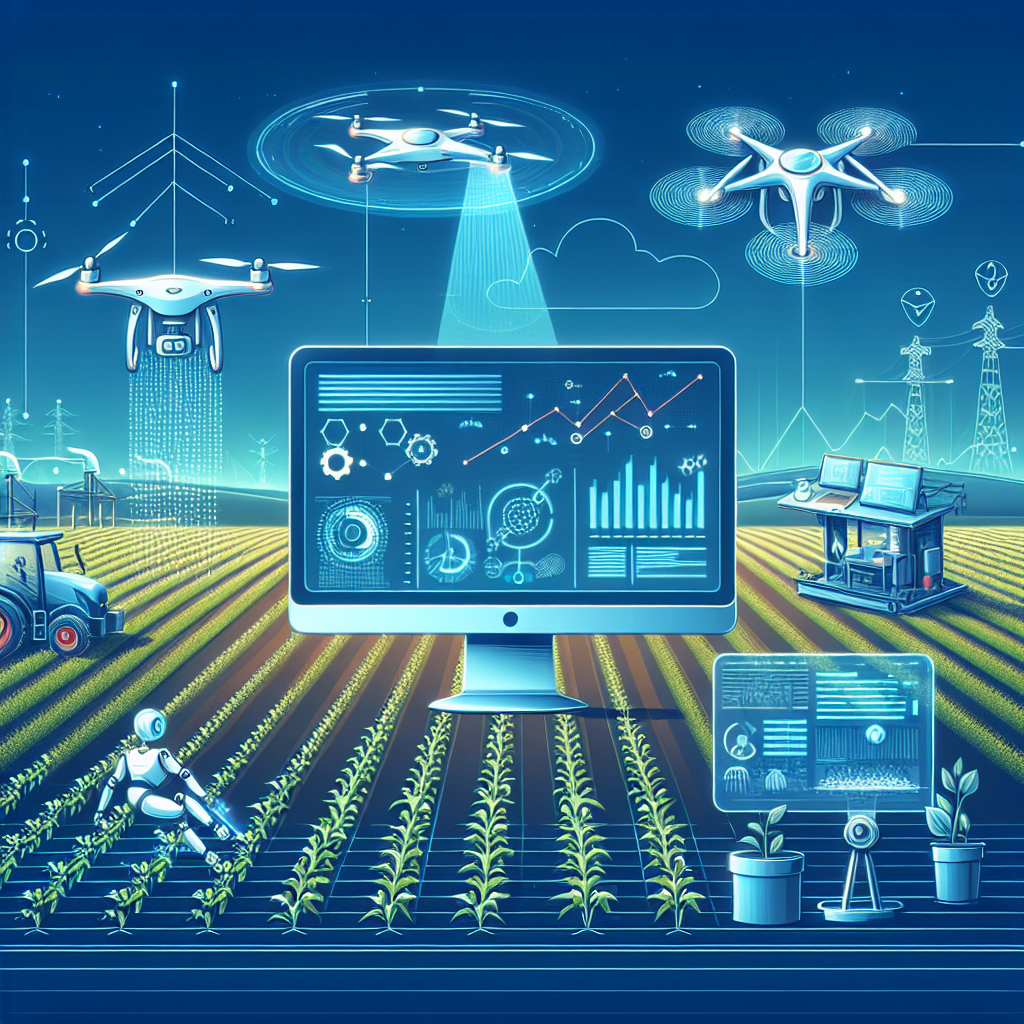Agriculture has always been a vital industry, supplying the world with essential food and resources. However, with a growing global population and the challenges posed by climate change, it has become increasingly important to find innovative solutions to increase agricultural productivity and sustainability. Artificial Intelligence (AI) is one such solution that is revolutionizing the field of agricultural research.
AI refers to the simulation of human intelligence processes by machines, particularly computer systems. In agriculture, AI can be used to analyze large amounts of data and make predictions and recommendations that can help farmers make more informed decisions. From crop monitoring to pest management, AI is transforming the way we approach agricultural research and practice.
There are several benefits of using AI in agricultural research, some of which are outlined below:
1. Precision Farming: AI technologies can be used to collect and analyze data on soil conditions, weather patterns, crop health, and other factors that affect crop growth. This information can help farmers make precise decisions about when and where to plant crops, how much water and fertilizer to use, and when to harvest.
2. Improved Crop Yield: By using AI-powered tools like drones and sensors, farmers can monitor their crops in real-time and detect early signs of disease or pest infestations. This allows them to take immediate action to prevent crop loss and increase yield.
3. Sustainable Agriculture: AI can help farmers optimize their farming practices to reduce waste and environmental impact. By using data-driven insights, farmers can minimize the use of pesticides and fertilizers, conserve water, and improve soil health.
4. Cost-Effectiveness: AI technologies can help farmers reduce labor costs and increase efficiency. For example, autonomous tractors and robotic harvesters can perform tasks that would otherwise require human labor, saving time and money.
5. Predictive Analytics: AI algorithms can analyze historical data to predict future trends in crop production, market demand, and weather patterns. This information can help farmers plan ahead and make strategic decisions to maximize profitability.
6. Disease Detection: AI-powered tools can identify diseases in crops at an early stage, allowing farmers to take immediate action to prevent the spread of the disease and minimize crop loss.
7. Weather Forecasting: AI can analyze weather data to provide accurate forecasts that help farmers plan their planting and harvesting schedules accordingly.
Overall, AI has the potential to revolutionize the agricultural industry by improving productivity, sustainability, and profitability. By harnessing the power of AI technologies, farmers can make more informed decisions and adapt to the challenges of a changing climate and growing population.
FAQs:
Q: How can AI help with pest management in agriculture?
A: AI-powered tools can analyze data from sensors and drones to detect signs of pest infestations in crops. Farmers can then take targeted action to control pests and minimize crop damage.
Q: Are there any potential drawbacks to using AI in agriculture?
A: While AI offers many benefits, there are also potential drawbacks, such as the high cost of implementing AI technologies and the need for specialized training to use them effectively.
Q: How can small-scale farmers benefit from AI in agriculture?
A: AI technologies can be scaled to fit the needs of small-scale farmers, helping them improve productivity, reduce waste, and increase profitability.
Q: Is AI replacing human labor in agriculture?
A: While AI technologies can automate certain tasks in agriculture, human labor is still essential for tasks that require critical thinking and decision-making.
In conclusion, AI has the potential to transform the agricultural industry by improving productivity, sustainability, and profitability. By harnessing the power of AI technologies, farmers can make more informed decisions and adapt to the challenges of a changing climate and growing population. As AI continues to advance, we can expect to see even more innovative solutions that benefit both farmers and consumers alike.

